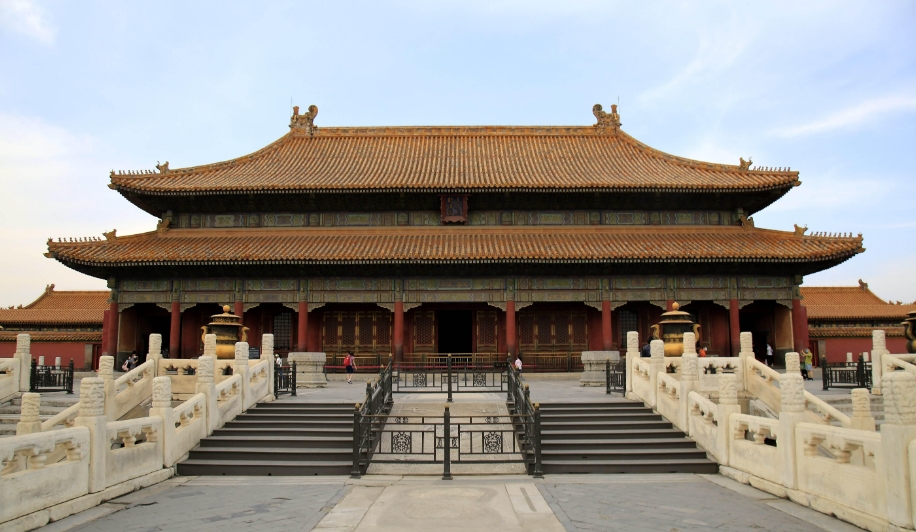
The Forbidden City: A Glimpse into Imperial China
Nestled in the heart of Beijing lies a sprawling architectural masterpiece that whispers tales of emperors, dynasties, and a bygone era. This is the Forbidden City, formally known as The Imperial Palace of the Ming and Qing Dynasties. Erected between 1406 and 1420 under the decree of the Yongle Emperor, Zhu Di, the Forbidden City served as the political and ceremonial center of China for over five centuries, witnessing the reigns of fourteen Ming and ten Qing emperors.
A City Within a City:
Encompassing 180 acres and boasting a staggering 980 buildings with nearly 9,000 rooms, the Forbidden City was not just a palace, but a self-contained city within a city. This intricate complex, designed according to strict principles of cosmology and hierarchy, was divided into two main sections:
- The Outer Court (南三所): Located in the southern portion, this section served as the stage for grand public ceremonies and official business. Here, the emperor would receive officials, conduct state affairs, and celebrate significant occasions. The most important structures within the Outer Court include the Hall of Supreme Harmony (太和殿), Hall of Central Harmony (中和殿), and Hall of Preserving Harmony (保和殿).
- The Inner Court (后三宫): Situated in the northern part, the Inner Court served as the private residence of the emperor and his family. This area housed the emperor's living quarters, the empress's palaces, and the residences of concubines. Key structures in the Inner Court include the Palace of Heavenly Purity (乾清宫), Hall of Union (交泰殿), and Palace of Earthly Tranquility (坤宁宫).
A Symbol of Power and Majesty:
Every detail of the Forbidden City, from its imposing walls and golden roofs to the intricate carvings and symbolic decorations, was meticulously designed to project an aura of imperial power and majesty. Some of the notable features include:
- Color Symbolism: The dominant colors used throughout the complex - yellow for the roofs, red for the pillars and walls, and black for the base platforms - each hold symbolic significance in Chinese culture, representing power, good fortune, and stability.
- Mythical Creatures: The roofs of important buildings are adorned with rows of mythical creatures, with the number of figures denoting the building's importance. The lead creature, a dragon-like "Chiwen" (鸱吻), is believed to ward off fire.
- Defensive Design: The Forbidden City is surrounded by a 52-meter-wide moat and 10-meter-high walls, each with a gate facing the cardinal directions. This design not only served as physical protection but also symbolized the emperor's dominion over all under heaven.
The Forbidden City Today:
After the fall of the Qing dynasty in 1911, the Forbidden City ceased to be the seat of imperial power. In 1925, it was transformed into the Palace Museum, opening its doors to the public and offering a glimpse into the grandeur and history of imperial China. Today, the Forbidden City stands as a UNESCO World Heritage Site, a treasure trove of art and artifacts, and a testament to China's rich cultural heritage.
Q&A
Q: Why was it called the Forbidden City?
A: The name "Forbidden City" (紫禁城, Zijin Cheng) originates from the belief that the emperor was the "Son of Heaven," and his residence was a sacred and forbidden place. Commoners and even officials were forbidden from entering without explicit permission from the emperor.
Q: How long did it take to build the Forbidden City?
A: Construction of the Forbidden City spanned 14 years, commencing in 1406 and concluding in 1420. Over a million workers, including artisans, craftsmen, and laborers, were involved in the massive undertaking.
Q: What can visitors see at the Palace Museum today?
A: The Palace Museum houses a vast collection of imperial artifacts, including paintings, calligraphy, ceramics, jade, bronzeware, clocks, and furniture. Visitors can explore the grand halls, courtyards, and gardens, experiencing the splendor and intricacies of the imperial palace firsthand.